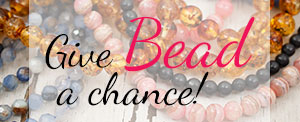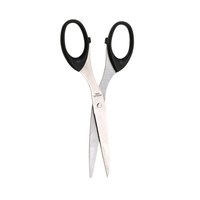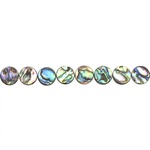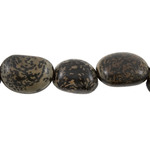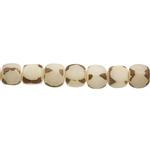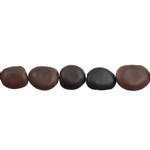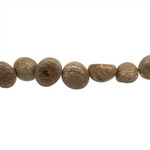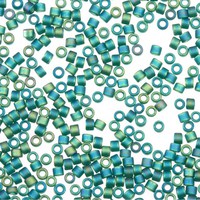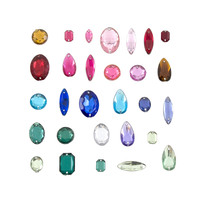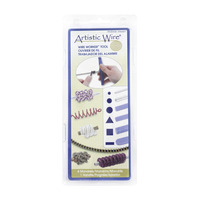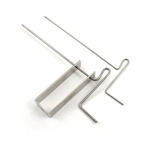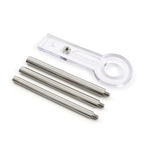Beader’s dictionary
- SCISSORS
- SCULPEY III
- SEASHELL
- SECONDARY COLORS
- SEED AND NUT
- SEED BEADS
- SEW-ON
- SHAMBALLA
- Silicone putty for mold making
- SILK (thread)
- SILVER
- SILVER AND GOLD CLEANER
- SLICER
- SODALITE
- SPACER
- SPIRAL
- SPIRAL MAKER
- SPRINGS AND RINGS MAKER
- STAINLESS STEEL
- STAMPING PLATE
- STEEL
- STEEL BENCH BLOCK
- STELLARIS
- STERLING SILVER
- SUEDETTE
- SUSPENSION
- SWAROVSKI
S
SCISSORS (See products)
Cutting tool, which has two pivoted crossed blades. Use them with soft materials such as paper, feathers, ribbons, nylon thread, sewing thread, cotton threads and leather.
SCULPEY III (See products)
Polymer clay that can be fashioned and baked per the packaging instructions. This line of product offers a nice choice of vibrant colors. This clay is flexible enough, which helps when it is being fashioned. It is usually used when crafting small details. This clay maintains some flexibility once baked, thus it can be fashioned, pierced, sanded and painted and the colors remain vibrant once baked. It is possible to mix the colors. The PREMO clay can be mixed with other polymer clays.
In the 1940s, the Zenith Products Company manufactured various coatings to isolate electrical conduits. The product, known today as the “Sculpey”, was originally a product meant to isolate the heart of a thermal transfer device. However, this product failed the tests and was put aside.
In the mid ‘60s, during a visit that a person that was not interested in thermal and electrical insulation ended up finding a small amount of this product. As its malleability was similar to dough, the visitor began to model small figures. Amused, the plant staff baked the figures in a laboratory furnace and thus, the Sculpey was discovered.
In 1967, the Sculpey was manufactured and distributed in small quantities in the United States.
In 1976, the factory Zenith Products Company was destroyed in a fire. Its relocation led to the birth of Polyform Products, a division of Zenith dedicated to the production of polymer clay and its derivatives.
To increase sales, Polyform leaders decided to embark on a promotional tour for people to try the product. This way, demonstrations were given on various shows and in craft shops. The promotional tour made it so that the product’s popularity exploded. Nowadays, a wide range of products is available through the Polyform company.
SEASHELL (See products)
The term seashell is the most widespread to designate the shell of a marine mollusk or other small crustacea. It can be cut easily in various shapes, most often though it is flat cut. Several kind of seashells are used in the process of making/creating jewelry pieces.
Abalone (See products)
The abalone or Paua nacre is a type of nacre that is found in a gastropod mollusk of the haliotis genus, that has a shell. The internal surface of its shell is iridescent with blue-green and pink iridescent highlights. Easily recognizable, its highlights are similar to the black opal. The abalone is at times fallaciously presented as a sea opal.
Black seashell (See products)
This seashell secretes a grey-brown nacreous substance with rainbow-like highlights. Its nacre is derived from the oil of a Polynesian oysters, which also provide the Tahitian black pearl.
Freshwater seashell (See products)
Freshwater seashells are taken from pond mussels, which also provide freshwater pearls. Calcium being less present in fresh waters, mussel shells come apart more easily. However, since these seashell secrete mother of a pearl a nacreous substance, their reflections are attractive. However, their reflections are far less impressive than the ones from sea mother of pearls. These seashells are easily dyed, they are thus available in a multiplicity of shades.
SECONDARY COLORS
Secondary color are orange, green and violet. These colors are the result of the blending of two primary colors. When put together in a jewelry piece these colors provide a bold and colorful contrast. These colors can also be combined in small quantities with monochromatic colors for a more sapient layout.
SEED AND NUT
Seeds and nuts are often confused with one another. Indeed, their origins are similar; they both come from a vegetal. The term nuts actually designates the walnut tree’s fruit, however, we also use this term to designate seeds such as almonds.
A seed is an organ that is part of a vegetal and can germinate. There are hundreds of varieties and some are used in the process of making fashion jewelry. They are dried, sanded, perforated and at times dyed, painted, or engraved.
Nuts are actually fruits with a shell or shuck that can originate from various tree. They can be dried and sometimes died to make fashion jewelry.
Some nuts and seeds are more frequently used to make jewelry.
Bull eye
The bulls eye seed is a seed that originates from a vine of the Vabaceae family, the Vigna Umbellata. There are several different varieties. Just like beans they come from a pod that can measure 10 to 15 cm. Each pod contains 2 to 4 seeds. The seeds are flat and bumpy. Their color vary from beige to dark brown and reddish-brown. Some are sprinkled with dark spots and hemmed with a black band all around.
Buri
Buri beads come from palm trees (Buri Palm). They are often cut in such a way as to leave brown grooves, creating a tiger stripe aspect. Their inner color is a clear beige slightly translucent. They can also be dyed.
Coconut
The coconut is a fruit that comes from the coconut tree, a tree that is part of the palm tree family. Coconut beads are made from the coconut shell which is extremely hard. Light and shock resistant, coconut beads and pendant naturally come in beiges and soft browns and can be dyed in a large array of colors. Coconut beads and pendant provide a natural and gender neutral aspect.
Edjok
Edjok seed beads have an oval shape, are cream colored and have a brown spot on one of their extremities, which is why they are also called white beetle.
Kagay
Kagay seeds are flat and slightly bumped. They measure approximately 4X5 cm. They are usually brown in color and smooth, at times they have a slightly tousled texture.
KuKui
The kukui seed comes from the fruit of the Kukui nut tree, which originates from the pacific and can reach up to 20 m high. The fruit of this tree measures approximately 5 cm and can produce one or 2 oleaginous seeds that are extremely rich in oil. These seeds are the ones used in fashion jewelry. The oil is extracted from the seed and the shell that is left from the process is what constitute the bead. Ranging from beige to dark brown, they can be painted, dyed or burned. The seeds measure approximately 2 cm, are hard, bumpy and hollow.
A little bit of history: A long time ago, this fruit was dried and burned so as to produce the black ink used for tattoos.
Pili
Pili nuts originate from the Canarium ovatum, a tree that is part of the Burseraceae (Torchwood) family, it is a Phllippinian tree. This seed is very hard and has an elongated shape and has three surfaces. It measure 3 to 4 cm long and 2 to 2.5 cm wide. Pili nuts are golden in color and sometimes stripped with maroon.
Pugahan
The pugahan seeds also called bird brain are beige in color and veined with brown. They have a rounded shape, a flat side and are quite small in size (1 cm to 1.3 cm) which gives them the appearance of a bird’s brain.
Salwag
Salwag seed come from the royal dwarf tree (Salwag palm tree). The shell from its fruit is red when ripe. The seed ranges from white to beige and is striped with yellow veins. It is covered with fibers that are removed to make beautiful beads. The beds are smooth and polished, quite small and vary in size.
SEED BEADS (See products)
Seed beads are small glass beads, round and squat, usually used in weavings. They can also be used in threading as beads or separators. They are called indian beads or seed beads because of their resemblance with the seeds that the natives used to make jewelry. Seed beads are available in different shapes and different finishes: mat, opaque, transparent, iridescent, metallic, etc.
Beads are found in various quality and from many different origins. The best quality bead comes from Japan, but it is also the most expensive. The Miyuki Japanese company launched on the market Delica beads, that boast a perfect calibration. Seed beads produced in the Czech Republic are rather uniform in size, shape, color and finish. As this kind of seed bead is less expensive than the Japanese one, it is often sold in larger quantities and it is the type of seed bead that prevails amongst weaving amateurs.
Finally, there are the Chinese seed beads. Their quality is inferior, however their irregularity gives them a less uniform aspect, which may be sought.
Seed beads are classified according to their size. Here is a table with the conversion of the main dimensions of the beads.
| Shape : Round | ||
|---|---|---|
| # | Millimeters | Beads per inch |
| 6/0 | 3.3 mm | 10 |
| 8/0 | 2.5 mm | 13 |
| 9/0 | 2.2 mm | 15 |
| 10/0 | 2.0 mm | 16 |
| 11/0 | 1.,8 mm | 20 |
| 15/0 | 1.5 mm | 26 - 27 |
| Shape : Tube | ||
|---|---|---|
| # | Millimeters | Beads per inch |
| 2 | 4.5 mm | from 1.8 to 2 mm |
| 4 | 6 mm | from 1.8 to 2 mm |
| 5 | 9 mm | from 1.8 to 2 mm |
| 6 | 12 mm | from 1.8 to 2 mm |
Magatama (See products)
Matagama beads are Japanese seed beads made by Miyuki. They have a round shape and their whole is not centered which creates a bump at the other end. They also exist under an elongated form (long magatama) that measures 4x7mm. Long matagama beads are slightly pointy and cut at an angle. Mostly used to weave, long magatama beads are also used to make jewelry using the Kumihimo disk. They are available in an array of colors and finishes: matte, opaque, transparent, iridescent, metallic etc.
Rulla (See products)
Rulla beads are seed beads that originate from Czech Republic, made by Preciosa®. They have a cylindrical shape and they measure 3x5mm and have two parallel holes that each measure 0,7mm of diameter. Rulla beads are available in various colors and finish. Mostly used to weave, they can also be used for threading or be used as spacers.
Superduo (See products)
The Superduo beads are Czech beads of the Preciosa® brand. Just like the Twin beads, they both have two holes that measures 0.8 mm each and are oval shaped. They measure 2.5 X 5 mm and are available in a variety of colors as well as in various finishes; matte, opaque, transparent, iridescent, metalized, etc. What differentiates Twin beads from Superduo beads? Both types of beads have two holes and are oval shaped, however, the Superduo bead’s shape closely resembles lozenges. This slight difference allows for the “flat” sides to be easily embedded when the beads are laid out side by side. The Superduo beads are usually used to weave, however they can also be used to string or be used as spacers.
Tila (See products)
Tila beads are small flat and square calibrated seed beads. Each bead measure between 5 x 5 x 1,9 mm and has 2 parallel holes that each measure 0,8 mm in diameter. Because they are very standard, they are ideal when weaving and also for embroidery and easy threading. Tila beads are available in a vast array of colors and finishes.
Twin bead (See products)
Twin beads are Czech manufactured seed beads. Their particularity is that they have two holes and have an oval shape. They measure 2,5 by 5mm and are available in a variety of colors and finishes (matt, opaque, transparent, iridescent, metalized, etc.). Mostly used to weave, they can be used to string or as spacers.
SEW-ON (See products)
Some flat beads have one or two holes in their center, much like a button. Their shape allows for them to be sewn on fabric or any kind of textile.
SHAMBALLA (See products)
The word Shamballa means "spiritual consciousness" and "creation of energy". It also refers to a type of bracelet. Traditional Shamballa bracelets are made of wooden beads tied with rope, held together by macramé. A sliding knot is used as the closing mechanism.
This bracelet originates from Tibet, but it is not attached to any religion. It is said to have the power to encourage the well-being of the person who wears it. According to Tibetan Lamas, wearing Shamballa bracelets can increase the possibility that the body and mind connect with the essential. In Buddhist mythology, Shamballa is a Sanskrit word which also means "peaceful place of happiness."
With the current phenomenon of fashion, more prestigious houses have produced a type of Shamballa bracelets with noble components, literally transforming them into pieces of jewelry. The term Shamballa also designate the balls associated with these bracelets. The Shamballa beads proposed by Club Bead Plus are formed of a resin paste in which are inlaid rhinestones. Cords that replicate silk, cotton, waxed cotton, rat tail, leather or hemp are suitable for the fabrication of fashionable Shamballa bracelets.
Silicone putty for mold making (See products)
Silicone putty allows to create molds from objects that surround you (charms, pendant, coins, seashell, twigs etc.). These molds are then used to pour resin. It contains 2 pastes that harden when mixed in equal parts. The paste takes on a flexible rubber texture. Warning: you dispose of about 3 minutes to kneed the paste homogeneously and mold the object before the silicone putty starts to cure. waiting time is about 25 minutes. Molds are flexible and supple. It is thus possible to reuse them. Read the instructions provided on the package before proceeding.
SILK (thread)
The silk thread is mainly used for the traditional making of pearl necklaces. As it is a flexible and soft wire, the knots are easily formed, they are strong and consistent. However this thread is not recommended for weaving because it is more fragile than the nylon or Nymo ®. Coils are available in size 00 (fine) FFF (large) or in small cartons of 2 m, under the numbers 0 to 16.
For the traditional threading of freshwater pearls, the diameter of the wire must be chosen according to the size of the holes of the beads. Note that the holes of the beads may vary in diameter depending on the pearl size and / or its source. The wire spool size "F" (by doubling it) works for the majority of pearls. However, it must be purchased separately and must be used with twisted needles, acquired separately.
As for the Perlseide Griffin Bead Cord silk thread (wound on small cardboard pieces), the recommended sizes are number 2 (double wire) or 5 (no need to double the thread). For these products, the twisted needle is included.
| Spool | Card | Diameter |
|---|---|---|
| 00 | --- | 0.127 mm |
| 0 | --- | 0.127 mm |
| A | --- | 0.178 mm |
| B | --- | 0.203 mm |
| C | --- | 0.274 mm |
| D | No. 0 | 0.305 mm |
| E | --- | 0.325 mm |
| F | No. 1 | 0.348 mm |
| FF | --- | 0.381 mm |
| FFF | --- | 0.419 mm |
| --- | No. 2 | 0.45 mm |
| --- | No. 3 | 0.50 mm |
| --- | No. 4 | 0.60 mm |
| --- | No. 5 | 0,65 mm |
| No. 6 | 0.70 mm | |
| No. 7 | 0.75 mm | |
| No. 8 | 0.80 mm | |
| No. 10 | 0.90 mm | |
| No. 12 | 0.98 mm | |
| No. 14 | 1.02 mm | |
| No. 16 | 1.05 mm |
SILVER (See products)
Silver (Ag) is a precious metal of a gray-white color that shines once polished. It is a malleable and ductile metal. Silver is used in jewelry, but it is most often encountered in the form of sterling silver (925 silver), since pure silver is very soft and deforms easily. Over time, it oxidizes or tarnishes when in contact with air, which is why it should be cleaned occasionally. The main countries producing it are Mexico, Peru, China, Australia, Chile, Bolivia, the United States, Poland, Russia and Argentina.
SILVER AND GOLD CLEANER (See products)
Liquid agent used to clean dirt and oxidation on the surface of silver or gold pieces. Simply spread some with a rag or simply let the piece soak for a couple of seconds in the cleaning agent.
SLICER (See products)
Stainless steel blade used to slice polymer clay. The blade allows for straight cut without any blunders. Furthermore, since it is flexible, it is possible to make round cuts. It can also be used to flatten the clay slightly.
SODALITE (See products)
Sodalite is a stone of a blue, white, gray color, although it can be colorless, from the family of silicates. In jewelry, it is only used in its blue color. It has a pattern of veins of white limestone. Its name comes from its sodium content. It comes from Brazil, the United States, Canada, Greenland, India, Namibia and Russia. It can sometimes be confused with lapis lazuli. Sodalite is usually cut into cabochons, beads or other objects.
SPACER
From the finding family, a spacer is a bar pierced with several holes (2 to more) designed to hold wires of a jewel in several rows. Each wire must pass in a hole in the spacer. Hence, the spacer creates a distance between the wires so they do not tangle.
The distance between the holes of the spacer varies from one model to another. You must choose the diameter of the wire in order to accommodate the holes of the spacer. In the same vein, the beads must be chosen according to their diameter and the spacing between the holes in the spacer so that the beads are not too large for the divider.
Some models of spacers are decorative, while others, thinner, are barely noticeable in a jewel. A spacer may be of a variety of materials and sizes (metal, plastic, fine stone, bone, glass, rhinestones, etc.).
SPIRAL
When handmade, the spiral (craft links) is usually made of wire: copper, aluminum, stainless steel, brass, sterling silver, etc. It consists in making a loop with a round nose pliers, then using the pliers to gradually turn the wire around the loop. If the coils of the wire are touching, the spiral is said to be "closed". If there is a gap between the circling wires, the spiral is said to be "open”. Spirals are a great way to a fun creative touch, and personalize a jewelry piece.
SPIRAL MAKER (See products)
Tool made of two Plexiglass plates linked by nails. This will allow you to create beautiful regular metal wires spirals. Use it with wires of calibers between 20 and 28.
SPRINGS AND RINGS MAKER
The spring or ring maker is a tool that can make springs out of metal strings, thus essentially making rings as well, in any size or color. This tool is made with mandrels around which the spring shapes itself and a support or a handle to which the mandrel is connected.
There are many variants of this tool. Some have round, oval, triangular or various other shapes of mandrels. Various mills are used to make tubes or springs of different diameter and shape. Some mandrel are inserted in support whereas others are screwed in a handle. This tool can be used with metal flexible strings such as copper, aluminum or sterling silver strings.
Spring and ring makers with mandrels and a holder
Tool doted with 2 mandrels with handles of different diameters and an anchoring base. This tool is used to make metal coiling wires that you can incorporate in your creations. You can also cut these springs to make your own round rings, of the color or shape of your choosing. Use it with metal wires whether copper, aluminum or silver of any caliber.
Spring and ring makers with mandrels that are screwed in
Tool used to make oval coiling wires. This oval rings maker has three oval mandrels of various sizes. The chosen mandrels and metal wire are fixed to the support. With simple rotation movements, the metal wire wraps around the mandrel and creates a spring. Cut the spring to obtain oval rings. Use it with flexible metal wire such as copper, aluminum or silver.
STAINLESS STEEL (See products)
Stainless steel, also called inox, is a type of steel (an alloy of iron and carbon) to which chromium is added. In fact, when chromium is combined to the steel and carbon alloy, it generates a protective layer of chromium oxide that slows or even stops corrosion, keeping the steel "stainless". Other elements can be added to the alloy, for instance nickel, molybdenum, titanium, vanadium or tungsten. These additions can improve different mechanic properties, such as ductility, stability or its resistance to high temperatures.
STAMPING PLATE (See products)
Stamping discss are slim plates made of flexible metal such as aluminum or nickel silver. They are to be used when working with metal stamps. These discs can thus be stamped or pierced, using a perforating tool and can then be glued, folded, hammered and integrated to a piece of jewelry using jump rings (if the plate is pierced). These plates are available in several shapes and must be used on a hard and flat surface (steel bloc or anvil).
STEEL
Steel is an alloy that consist of at least these two elements: iron and carbon. The carbon content gives this alloy the properties attributed to steel. The carbon content has a considerable influence over the steel properties: under 0,0008%, the alloy remains malleable and is called "iron"; over 2,1%, it is referred to as "cast iron". Between these two values, the increased percentage of carbon improves the mechanical resistance and hardness of the alloy. We are then in presence of steel (soft, half-soft, half-hard, hard, extra-hard) as per the traditional classification. There are other metals based on iron that are not considered steels, such as cast irons and ferronickels.
STELLARIS (See products)
The Stellaris range of crystal includes a selection of nearly 500 crystal beads of high quality, boasting an impressive color palette in a number of shapes and sizes. Its primary advantage compared to the Swarovski crystals is undoubtedly its excellent value. Indeed, it is possible to get three times more crystals than the competitor's brand for a comparable price. The reason is simple: as they were designed in Canada and they are currently produced in China, it is the house brand of crystals developed and distributed exclusively by Club Bead Plus.
STERLING SILVER (See products)
Sterling silver (also known as 925 silver) is an alloy made of non ferrous metals. The composition of sterling silver was standardized in the 13th century. The alloy consists of 92,5% of silver (925 parts of pure silver) and 7,5% of copper (75 parts). This is why it is referred to as "925" silver. Copper is added to silver to harden it, as pure silver is highly malleable and can easily be scratched.
Recognized for its shine, sterling silver is a type of metal that oxidizes easily. It can be a voluntary oxidation produced with a chemical solution, at the final state of the silver making process, to increase its reliefs and textures. It can also be a natural oxidation, often referred to as tarnish, a consequence brought on by various factors, such as skin’s acidity, exposure to water, air or moisture. Unless the tarnished piece is re-polished, it is impossible to fully restore its original shine. SImply cleaning sterling silver with dishwashing soap can give it a considerable luster, but the sterling piece must be dried properly thereafter. Polishing cloths and cleaning solutions specifically designed for this purpose are also sold and can be very effective for cleaning sterling silver. You just need to ensure that these products (cleaning solutions) are appropriate to the piece in question, as they may permanently remove a voluntary oxidation.
SUEDETTE (See products)
Suedette is a textile that feels and looks like suede. In fashion jewelry, we often find it in the form of strips (flat string), fringes or tassels. It can be used to string beads, charms or pendants. It can also be used with connectors cords, be braided or be knotted.
SUSPENSION
Suspension refers to the method or technique used to set beads at intervals on a string, thus making them look as if they were floating. Beads on fishing line, cotton waxed cord or rat-tail thread can be used to make suspensions by tying knots to block the bead. This technique can also be used with steel wire coated with nylon (Tigertail), if crimp beads are used to separate the beads. On ribbons, the width and texture hold the beads in place.
SWAROVSKI (See products)
The company Swarovski (pronounced SWORR-OFF-SKEE) was created in 1895 in Wattens, Austria. Founded by Daniel Swarovski, Franz Weis and Armand Kosmann, the company was the first to use automated machinery to cut the crystal. This machinery was invented and patented in 1892 by Daniel Swarovski.
Swarovski crystal is a crystal glass, in other words a glass with a high concentration of lead. It is composed of about 32% lead for a greater effect.
Lead in glass can modify certain of its characteristics, for instance, it lowers the working temperature of the glass, increases its malleability period and its hardness after cooling. It also makes it easier to cut and polish it once cold. But the main purpose of lead is to maximize the refraction of the crystal.
Swarovski crystal is also known for its various coatings with a number of effects. Coatings are applied to the crystal on one part of the piece or as a whole. Some coatings can also be applied twice for a more intense effect.
There is a long list of existing coats for the crystal. The most common and most popular aurora borealis (also called AB). This coating is one of the first created by Swarovski in collaboration with Christian Dior. This effect has yellow highlights with a hint of pink and blue.
There are a great variety of Swarovski crystals available in a multitude of colors, shapes and sizes.
